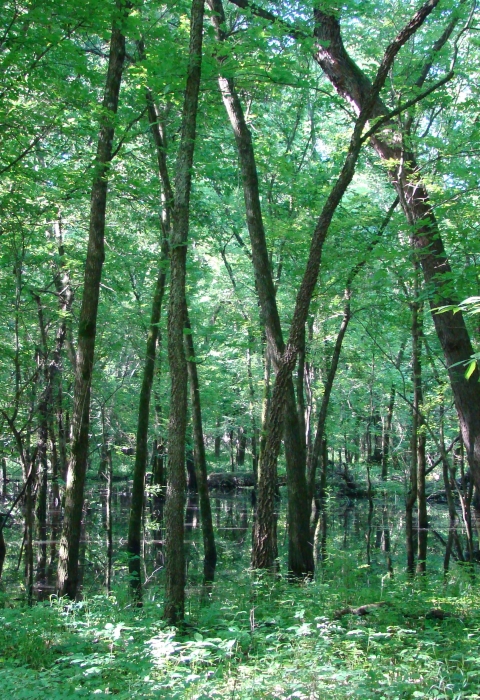Marais des Cygnes National Wildlife Refuge in eastern Kansas is unique because it was established to restore and protect bottomland hardwood forests. When you think of a National Wildlife Refuge, protecting fish and wildlife species usually comes to mind, but Marais des Cygnes prioritizes both bottomland hardwood forest and fish and wildlife species. Since the time of the refuge’s establishment, “old field” habitats have provided opportunity for restoration projects. Starting in 2008, the refuge began working with The Conservation Fund: Go Zero Program to restore the forest and plant more native trees. 776 acres were planted resulting in over 234,000 seedlings! These new plantings, along with existing forest, provide a contiguous block of 2,500 acres of bottomland hardwood forest along the Marais des Cygnes River.
The effort began again in 2017 when the remaining 660 acres of plantable land was restored as forest. This time, over 190,000 seedlings were planted. The decade-long effort will have benefits that could last hundreds of years, including carbon sequestration which will help combat climate change climate change
Climate change includes both global warming driven by human-induced emissions of greenhouse gases and the resulting large-scale shifts in weather patterns. Though there have been previous periods of climatic change, since the mid-20th century humans have had an unprecedented impact on Earth's climate system and caused change on a global scale.
Learn more about climate change . As the different tree canopies develop, the forest provides wonderful habitat for countless wildlife species - especially migratory birds.
Flint Hills National Wildlife Refuge in Kansas is working on its own forest restoration as well. This year (2022), 325 acres of forest were restored along the Neosho River. At 420 trees per acre, 140,000 seedlings were planted in total.
Both project at Marais des Cygnes and Flint Hill National Wildlife Refuges fulfill habitat management plans for each refuge. Thanks to these efforts, the forests have a chance to thrive, provide crucial habitat for countless wildlife species, and sequester carbon.



